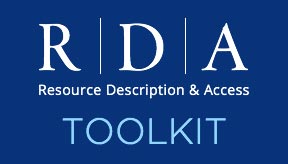3R Project: Update from 2016 Frankfurt Meeting
This announcement provides updated information about the 3R Project (RDA Toolkit Restructure and Redesign Project) resulting from discussions held at the RDA Steering Committee meeting in Frankfurt am Main 7-11 November 2016.
James Hennelly (Director, ALA Digital Reference) began working on the 3R Project earlier in 2016; an overview is available on the Toolkit website. In addition to providing greater flexibility in the display of instructions, improved functionality for editors and translators, easier-to-manage mappings of RDA to encoding systems, and better tracking of revision history, the 3R Project will also bring the site into compliance with current accessibility standards.
This major upgrade to RDA Toolkit platform includes conversion of the underlying data to the DITA standard, an XML data model for structured authoring and publishing. Data conversion will include translations and policy statements.
The restructure of RDA Toolkit also builds on the synchronization process already established between the RDA Reference data maintained in the Open Metadata Registry (OMR) and RDA Toolkit. Definitions and scope statements for RDA value vocabularies and elements are stored in the OMR and are imported into and published in RDA Toolkit in instructions, the glossary, and other relevant areas so that data is maintained in only one place. More detail about this process, which was used in the August and October 2016 Toolkit updates, can be found in RSC/Chair/17.
At the Frankfurt meeting, the RSC established general principles for restructuring: to generalize existing instructions where possible, to explain both the transcription and recording of data via the 4-fold path (unstructured description, structured description which includes authorized access points, identifiers, and URIs), and to expand RDA’s scope to other cultural heritage communities.
Although current instructions will be relocated within the RDA content, any revision of those instructions will have minimal impact on current practice, and a mapping will be included from the current RDA instructions to the relocated RDA instructions. More flexibility in numbering and fewer levels of hierarchy are needed, but the new numbering system has not yet been designed.
One significant component of the 3R Project is the implementation of the IFLA Library Reference Model (LRM). This IFLA standard consolidates and updates the FRBR, FRAD, and FRSAD conceptual models and the report of the FRBR Working Group on Aggregates. Although the LRM will not be finally approved and published by IFLA until 2017, the RSC decided to proceed because it is aware through its protocol with the IFLA FRBR Review Group that the issues still under discussion are minor. The RSC expects to add five new entities to RDA from the LRM: Agent, Collective Agent, Nomen, Place, and Time-span. More information about LRM implementation will be given in a subsequent announcement.
User stories submitted earlier this year have been very helpful in determining critical needs as well as desirable enhancements. User stories will be collected through the end of 2016; fill out a User Story Submission Form and return it to rdatoolkit@ala.org with subject "3R User Story".
The restructured Toolkit is expected to be released in April 2018.
Posted 28 November 2016
